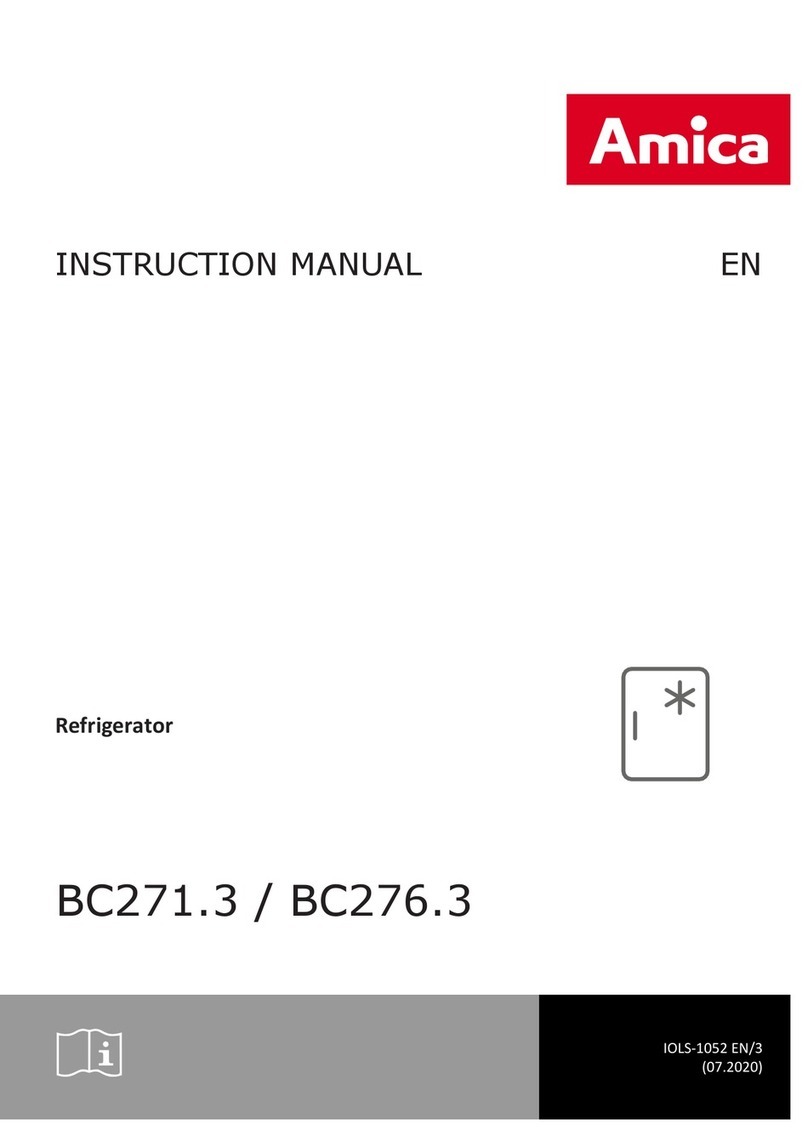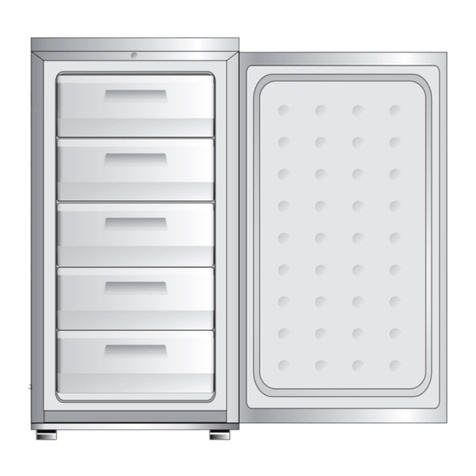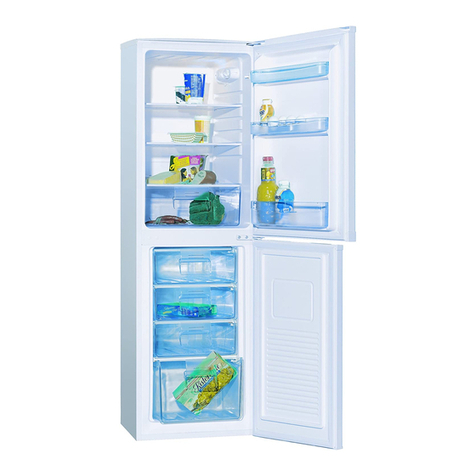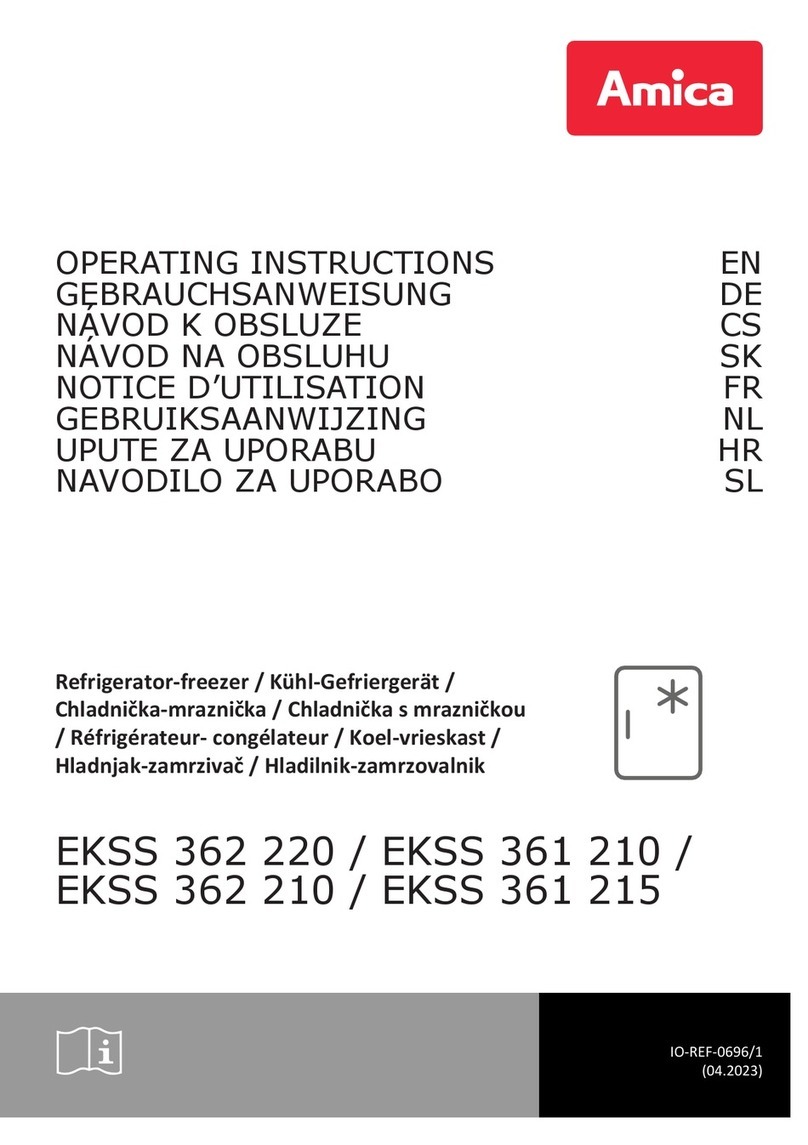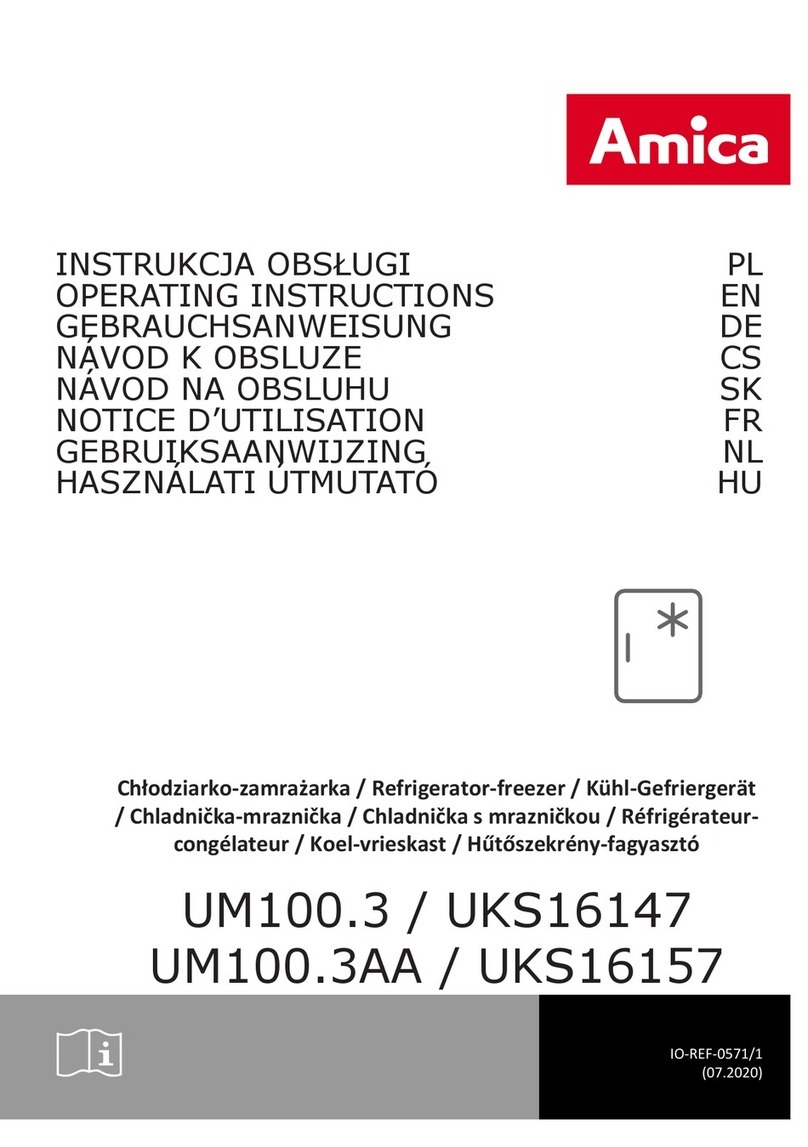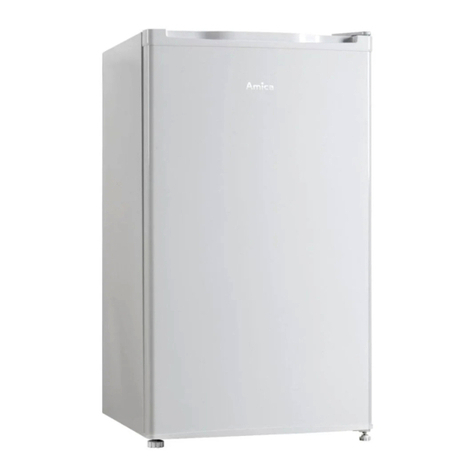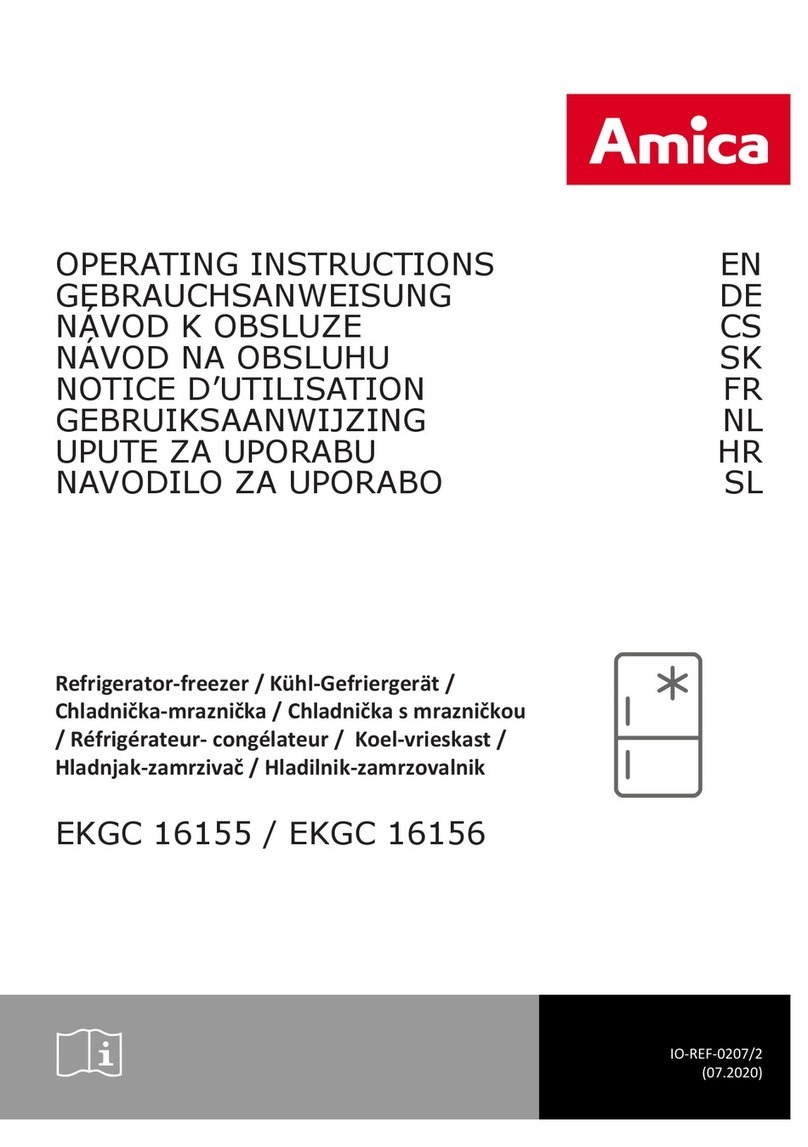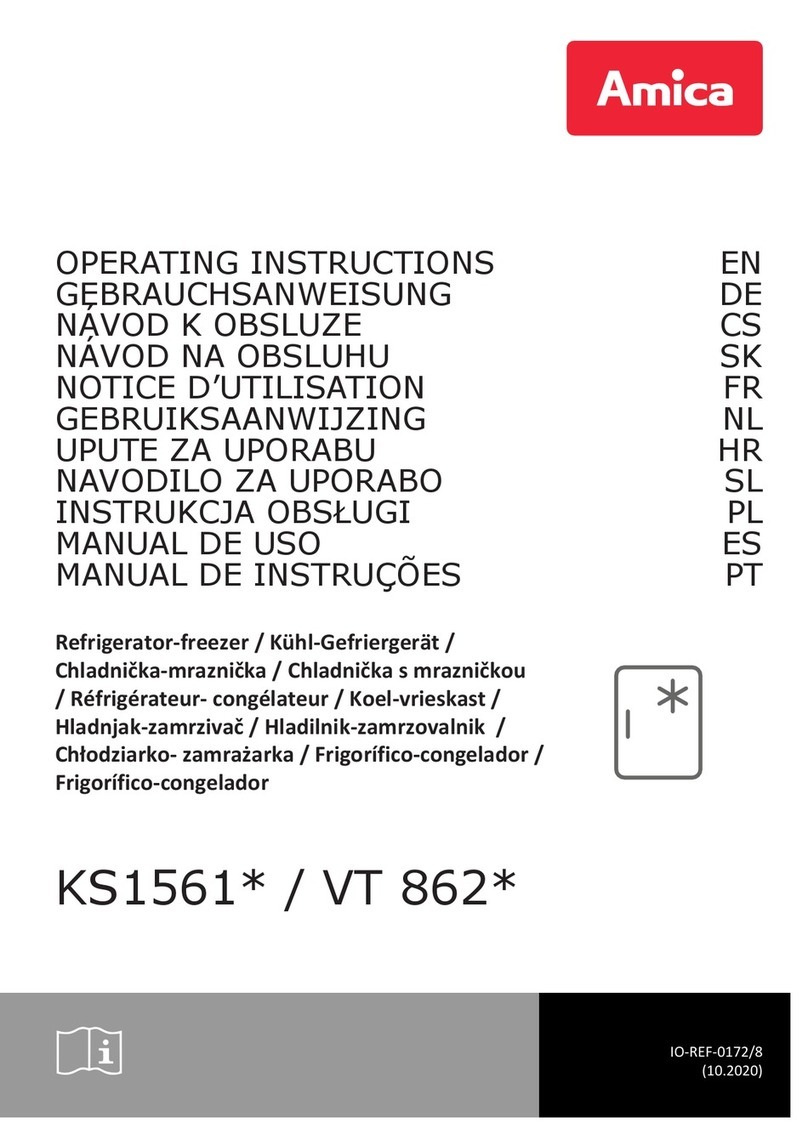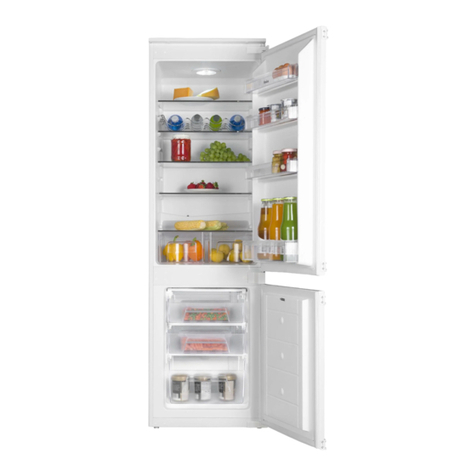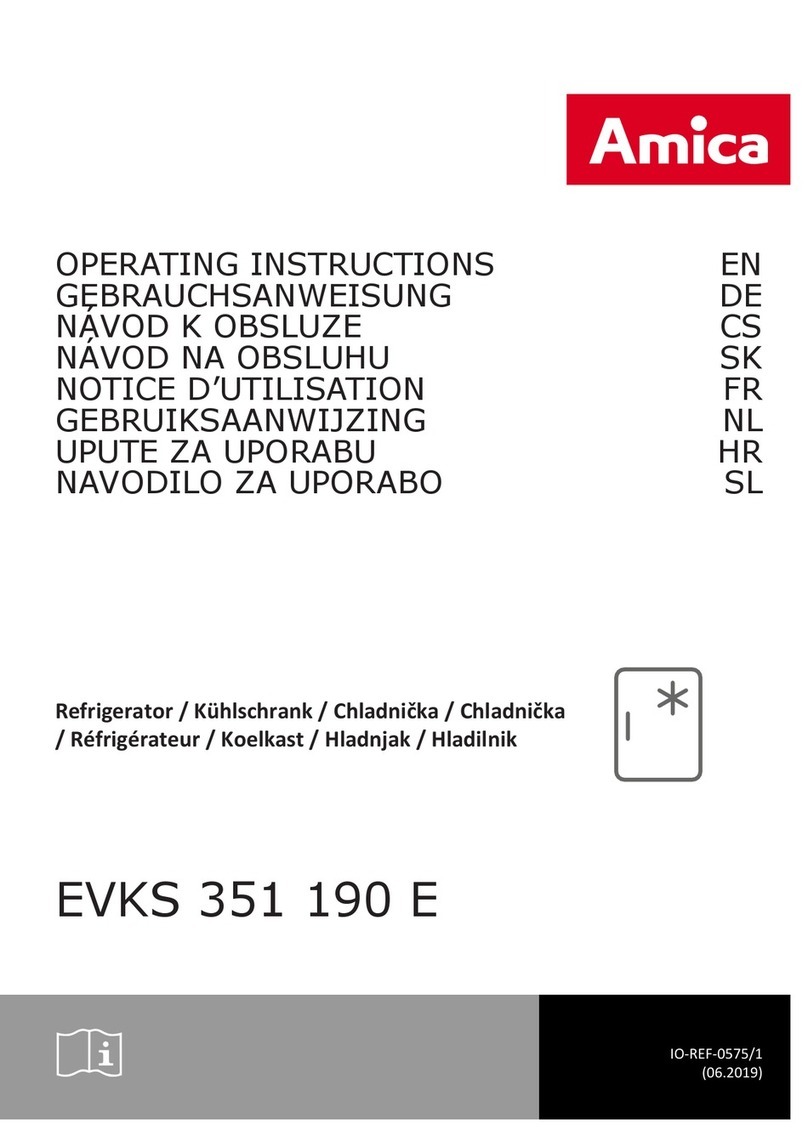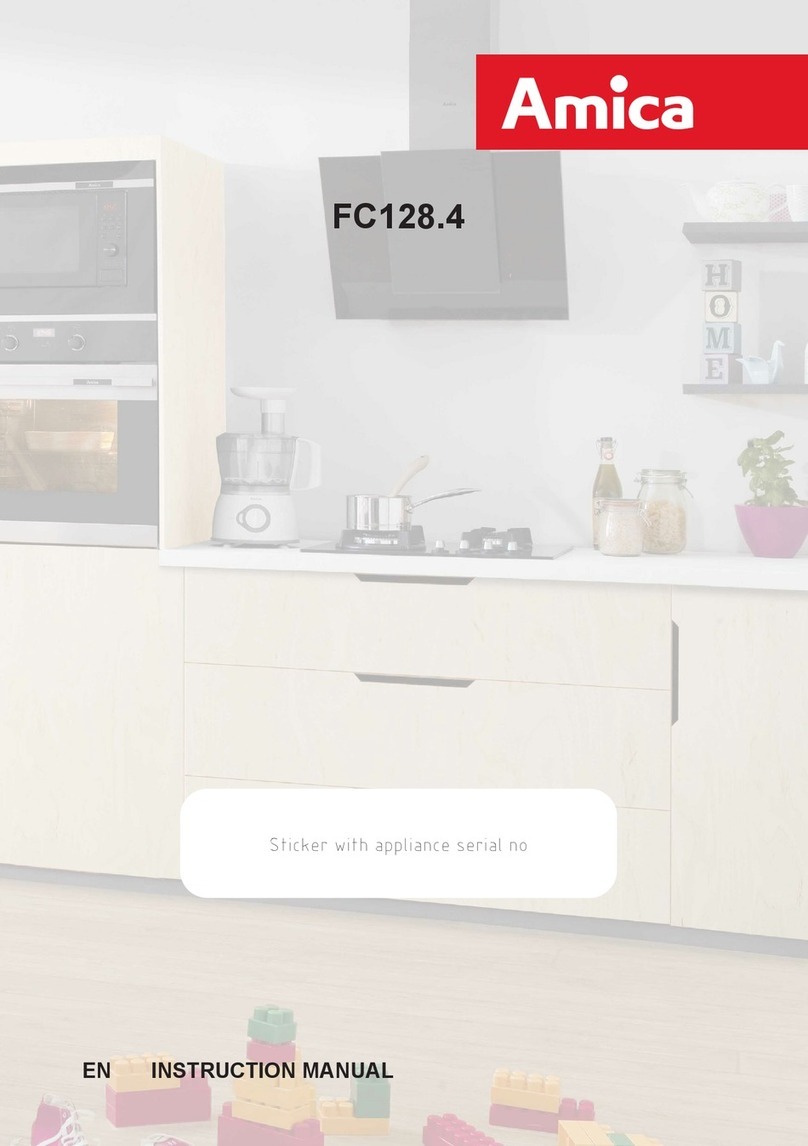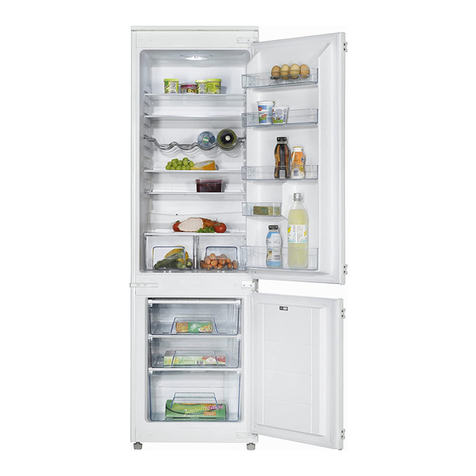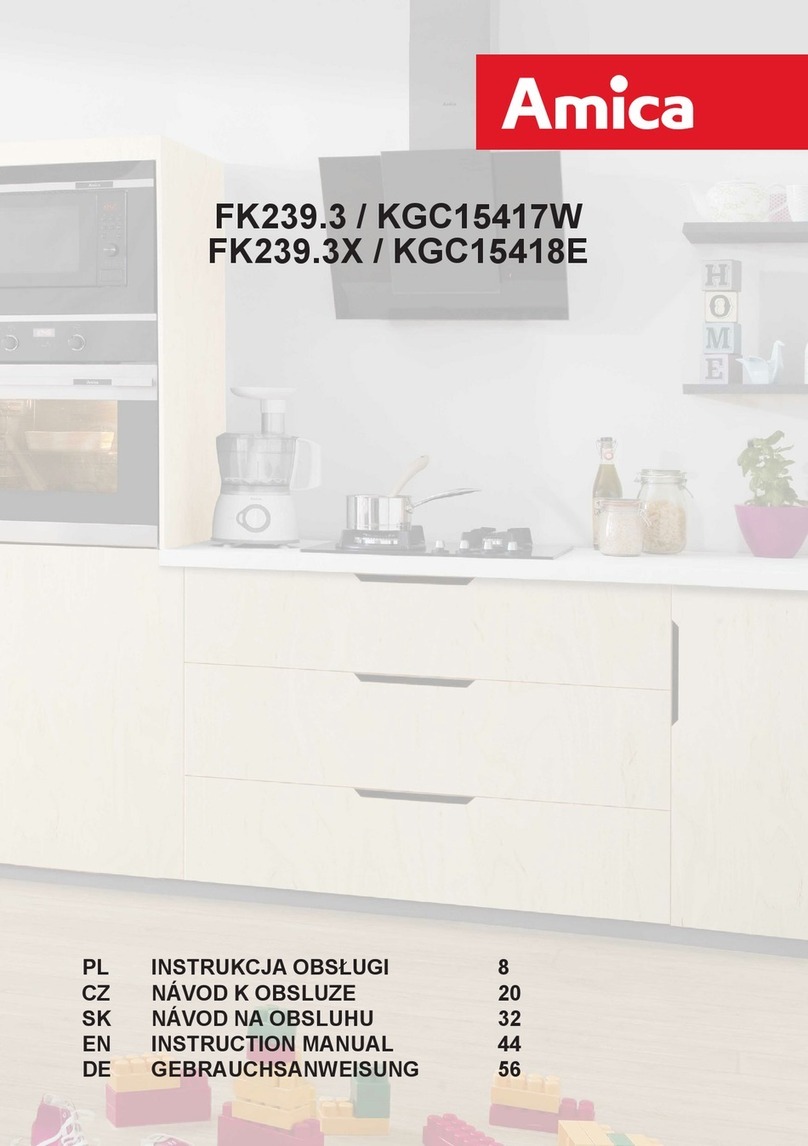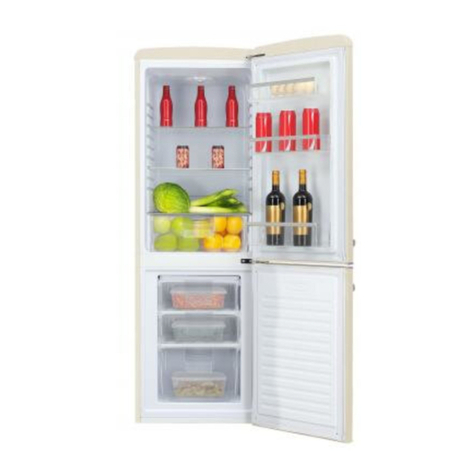7
GUIDELINES CONCERNING THE SAFETY OF USE
lThe Manufacturer shall not be held
liable for the damage arising from
the failure to observe the principles
contained in this manual.
lKeep this manual for future re-
ference, or to pass it over to the
possible next user.
lThis appliance is not intended for use
by persons (including children) with
limited physical, sensual or psychical
capabilities and persons who lack
experience or familiarity with the ap-
pliance, unless attended or in accor-
dance with the operating manual for
the appliance delivered by persons
responsible for their safety.
lDo not allow the unattended
children to use the appliance. Do
not allow them to play with the
appliance. They must climb insi-
de the drawers and swing on the
doors.
lThe fridge operates properly at the
SN-T ambient temperature (see
page 21). Do not use it in the cellar,
unheated summer cottage during
autumn and winter.
lWhen placing, moving, lifting the
appliance, do not hold the door han-
dles, pull the condenser at the rear
part of the refrigerator and touch the
compressor unit.
lWhen transporting, moving or
placing the fridge do not tilt it by
more than 40° from the vertical
position. Should such a situation
occur, the appliance may be swit-
ched on after minimum 2 hours
from its placement in the right
position (g.1).
1
lPull the plug out from the mains
socket before each maintenance
activity. Do not pull the cord, but hold
the body of the plug instead.
lThe cracking-like sound, which the
appliance may emit is caused by
expansion and shrinking of parts as
a result of temperature variations.
lFor safety reasons do not repair the
appliance on your own. Repairs car-
ried out by persons who do not have
required qualications may constitute
a serious hazard for the user of the
appliance.
